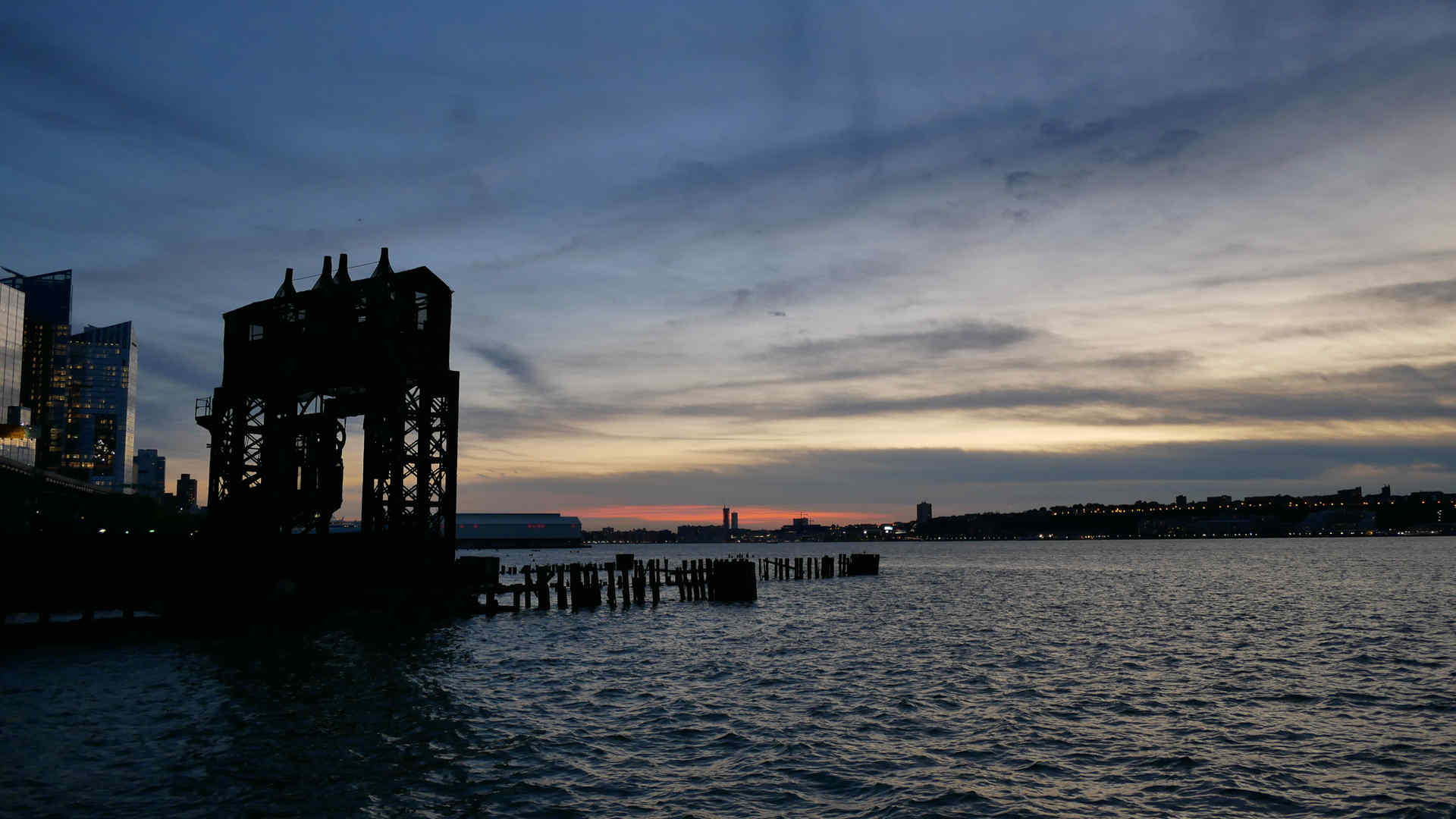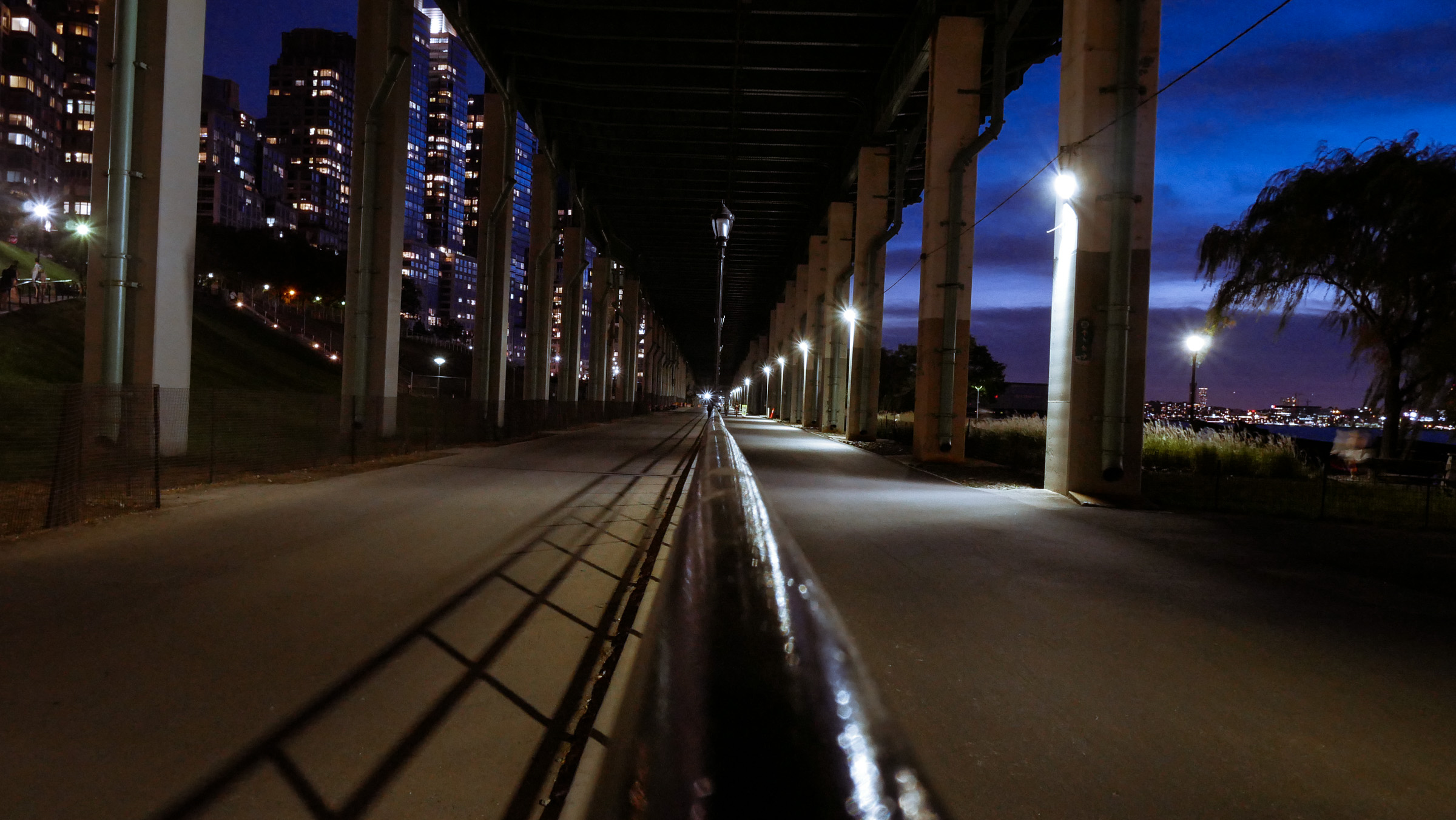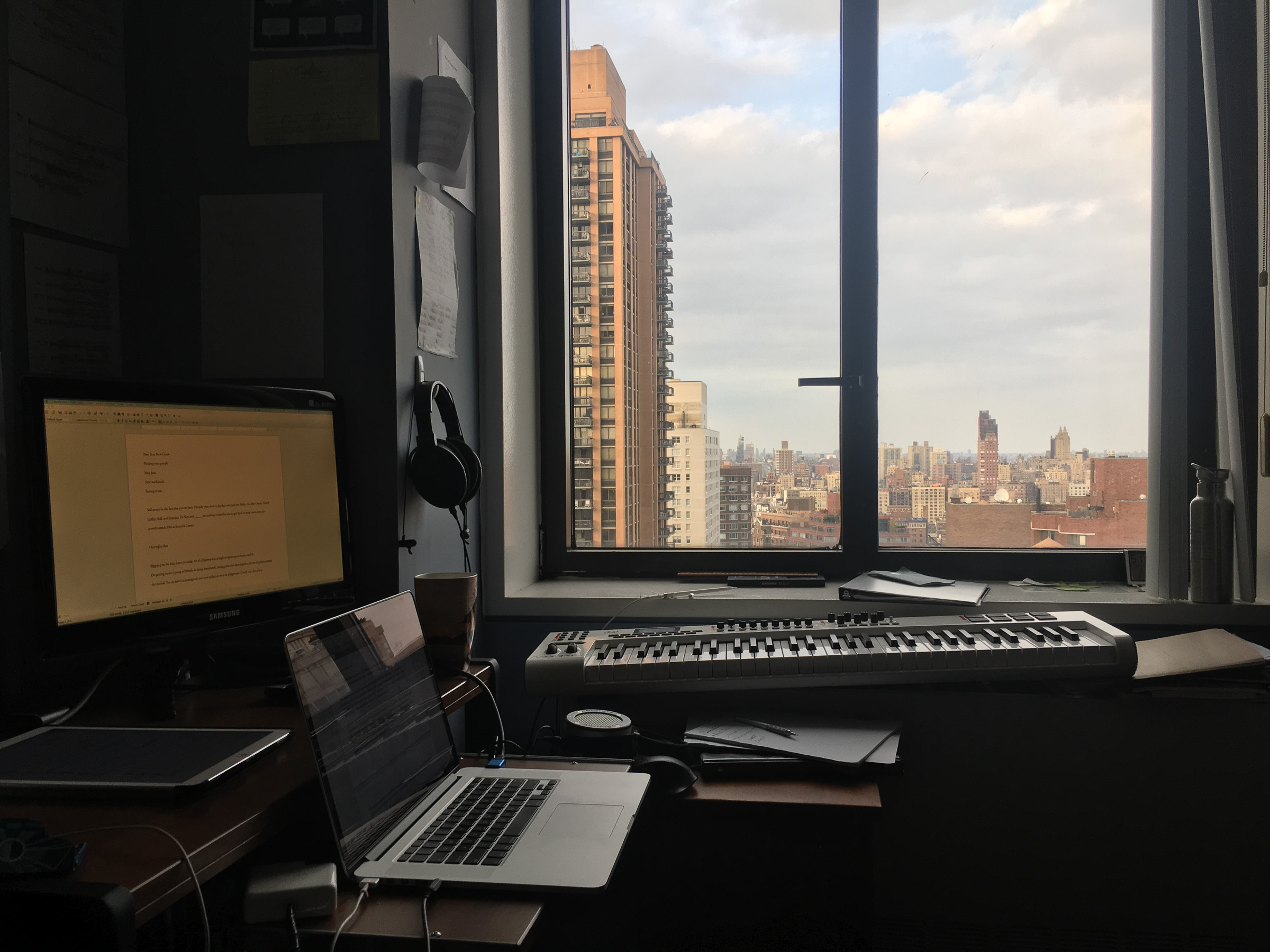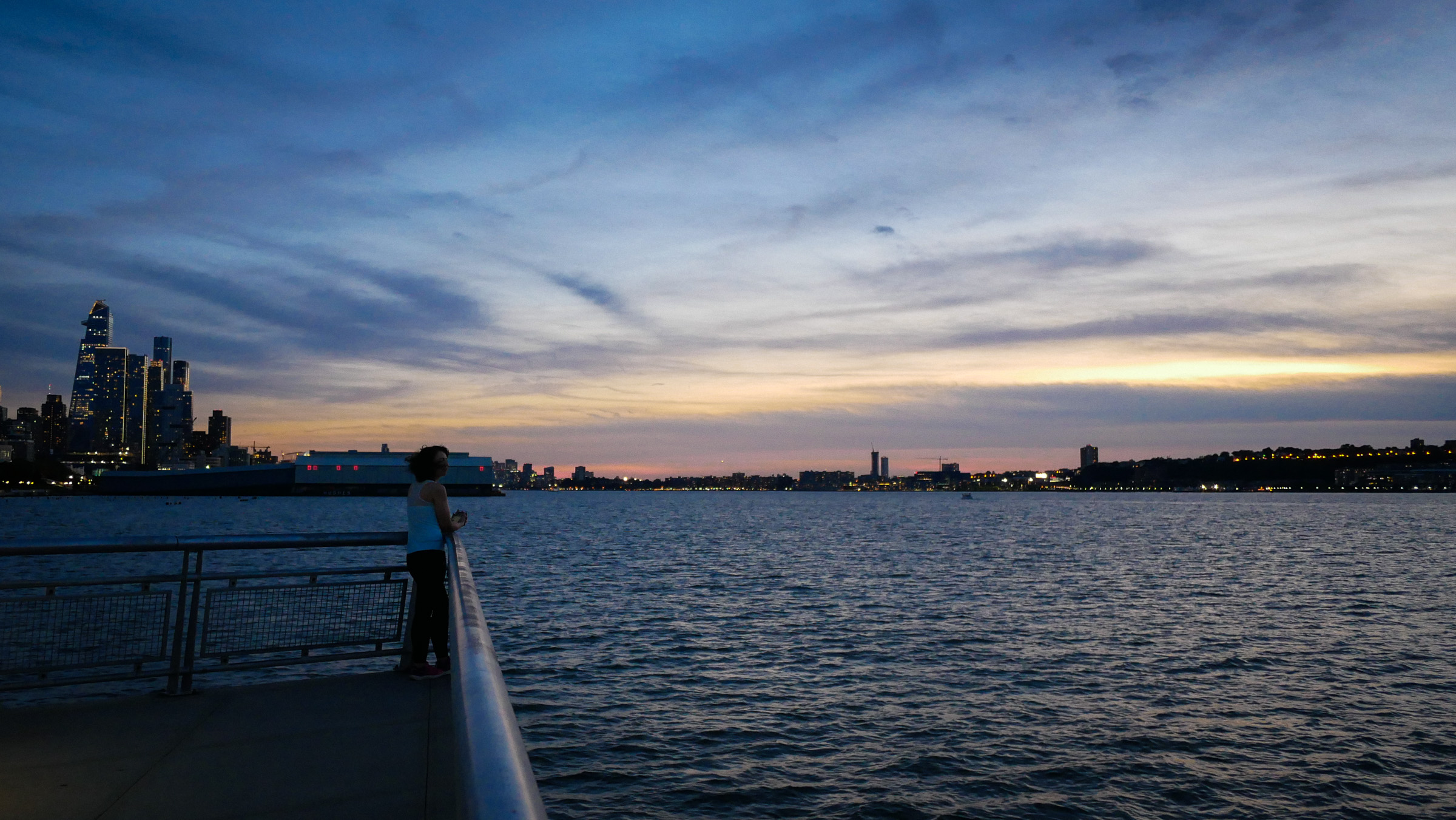
“Let me show you guys something crazy.”
“Ok.”
“Stand here and listen.”
We do. It's 2am on a Friday; the city noise has subsided to a wash of distant tire-noise and sirens. The river is quiet.
“Now put your head over.” We lean our heads over the end of Pier i, by Riverside Park at 68th Street. The water rushes and crackles close in our ears. We pull our heads back and the crackling disappears.
“The acoustic is amazing.”
“How did you find out about that?”
“I don't know. I guess by accident.”
We test the effect a few more times before settling on a bench and talking about the size of our home cities. Yuval: Ra'anana—70,000; Jan: Concord—40,000; and me: Winnipeg—700,000.
“Will you live here after you graduate?”
“Do you guys like to live in the city?”
“I think the perfect setup is to live in the country and drive in maybe twice—my teacher drives in twice a week, but lives outside.”
“That's a lot of commuting though.”
“But once I get my one-wheel—”
And we imagine Jan hurtling into the city at 300 mph on a futuristic skateboard to teach private lessons on a Monday morning. We return to our suite late.

Our 300-mph vision of the future is perhaps more explicable than it first appears. We all have a couple of years of school ahead of us, and the artistic career landscape continues to evolve quickly. From the dorm, we can see Juilliard, the Met Opera, NYC Ballet, and the NY Phil—institutions that show no signs of slowing down. Yet opportunities, jobs, and career paths are never quite the same year to year.
This year, for example, the BBC Symphony produced a massive recording session for Spitfire Audio in order to create the latest in a long line of Virtual Symphony Orchestras. Now 99 of the BBC's finest musicians are playable on the MIDI keyboard in my tiny dorm room. The symphonic institution will never be replaced, and yet in some ways, I'm less desperate for an orchestral reading than I was before these tools were available. Some musicians are now full-time virtual instrument creators, recording samples and coding them into instruments that sometimes mimic their acoustic counterparts and other times create something entirely new.

Not only do career paths evolve, but so do the individual dreams. A freshman musician tells me that, as focused and rigorous as her program is, part of Juilliard for her is finding out what she wants to do with music or if she wants to do with it at all. She has pursued this dream with a single-minded focus—one has to in order to make it here—but one single-minded thing is never all there is to a person. And it takes a great deal of hubris or foolishness to suppose one will be able to follow a preselected path through their career in music. In my first month here the plurality and ephemerality of these paths has become more vivid.
I suppose I showed up at Juilliard with less of a plan than most. In some ways I've already began honing a direction for myself here. In others ways my previous plans have been blown wide open. There's more to take in than one's mental model could precompute. As is the case with many things in life, I think a big part of it is showing up (even when you don't have to), bringing that which you love and think is important, being present, and letting the people and the place transform you as you transform them. In other words, walk to the end of the pier and stick your head over. Who knows what you might hear.

Attend a student performance on campus.